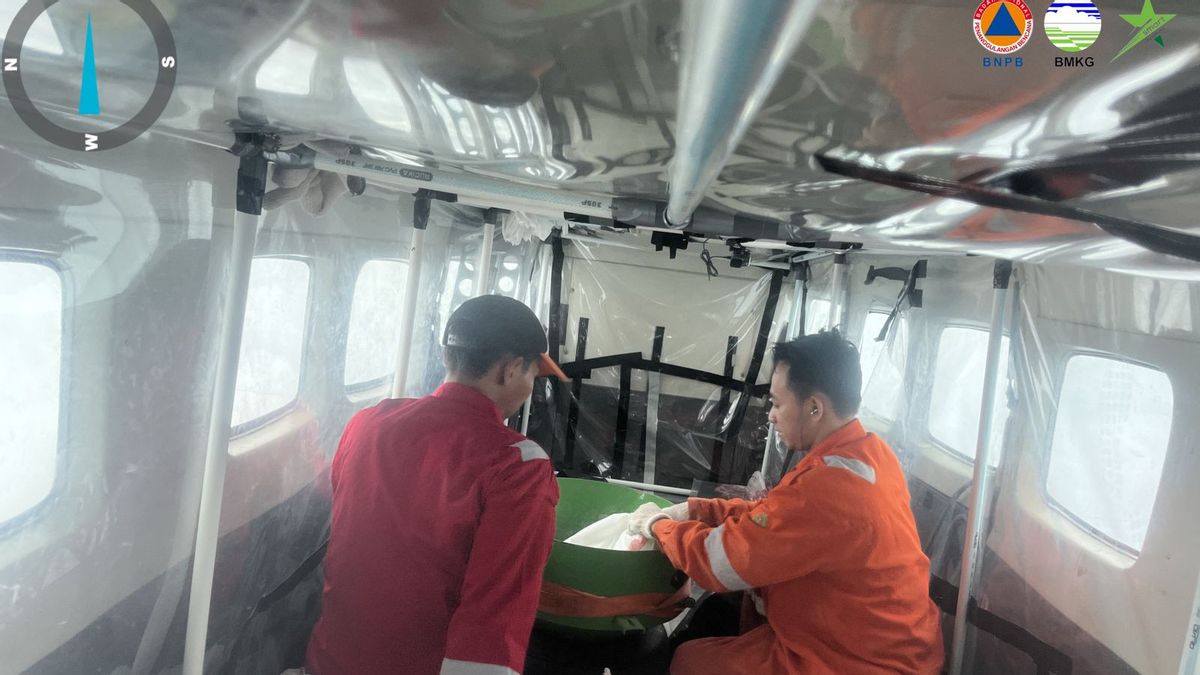JAKARTA - The National Disaster Management Agency (BNPB) is carrying out weather modification operations (OMC) in Central Java and South Kalimantan to suppress the impact of floods to landslides.
Head of the BNPB Disaster Data, Information and Communication Center Abdul Muhari said, OMC in these two provinces was held on Wednesday, January 29 yesterday.
"This operation involves cooperation between BNPB, BPBD, and the Indonesian Air Force, as well as using advanced technology to mitigate disasters," said Abdul Muhari in his statement, Thursday, January 30.
BNPB carried out operations using a cloud seeding method with Sodium Choride (NaCl), which aims to accelerate rain in water areas before moving towards the mainland.
In Central Java, OMC is carried out in three Sorti flights of the Cessna Caravan 208B (registration of PK-SNN) aircraft.
The first sorti starts at 07.58 WIB to 10.06 WIB, with the naming of 1,000 kg of NaCl in the waters north of Central Java. The second sort takes place from 14.08 WIB to 16.05 WIB, and the third sort is carried out in the afternoon between 16.32 WIB to 18.01 WIB.
In South Kalimantan, OMC was carried out in the coastal area of Tanah Laut with the seeding of 1,000 kg NaCl at an altitude of 10,000 feet using the Cessna Caravan 208B aircraft (registration of PK-SNP). The flight was carried out for 2 hours 30 minutes on January 29, 2025, with the aim of diverting rain from flood-affected areas and to safer areas.
"This process is expected to reduce the intensity of rain, as well as prevent a greater impact," said Abdul Muhari.
SEE ALSO:
According to Abdul Muhari, Central Java and South Kalimantan have the potential for hydrometeorological disasters. Based on careful weather analysis, the Asian Monsoon in Central Java is still active and Madden-Julian Oscillation (MJO) is in Kuadran 4, which supports the formation of very large rain clouds.
Coupled with the slowdown in the wind that exacerbates atmospheric instability, this condition increases the potential for heavy rain in the region.
"The 24-hour weather prediction shows that high rainfall intensity will lead to an increase in disaster risk, such as floods and landslides," he explained.
Meanwhile, South Kalimantan is also facing Madden-Julian Oscillation (MJO) activities and also plays a role in increasing the formation of rain clouds.
"Added by Rossby's equatorial waves affecting atmospheric conditions, South Kalimantan has the potential to experience extreme weather such as heavy rain and strong winds that can cause flooding and tornadoes," he said.
The English, Chinese, Japanese, Arabic, and French versions are automatically generated by the AI. So there may still be inaccuracies in translating, please always see Indonesian as our main language. (system supported by DigitalSiber.id)

















